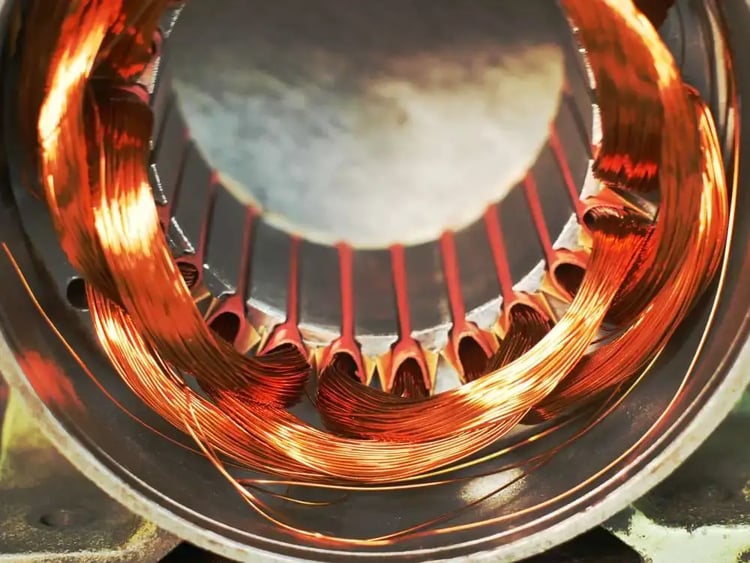Electric motors are characterized by their variety and wide range of sizes. There are fractional horsepower (HP) motors for small household appliances and motors with thousands of HP for heavy industrial use. Other specifications found on motor nameplates include input voltage, rated current, energy efficiency, and speed in RPM.
The rotational speed of an electric motor depends on two factors: its physical construction and the frequency (Hz) of the voltage supply. Electrical engineers select a motor's speed based on the needs of each application, in the same way that mechanical load determines the power required.
Make sure your building has the right electric motor for each application.
How Voltage Frequency Relates to Motor Speed
Depending on the country, the power supply will have a frequency of 60 Hz or 50 Hz. Although a three-phase motor rotates with both power inputs, there will be performance problems if a motor is specified for one frequency and used with the other.

Because a 60 Hz voltage source changes polarity 20% faster than a 50 Hz source, a motor rated for 50 Hz will rotate at 20% higher speed. Engine torque remains relatively constant and higher speed results in higher shaft power. The engine also releases more heat, but the cooling fan also accelerates with the shaft, helping to remove the extra heat. The motor also tends to consume more reactive current, which reduces its power factor.
Connecting a 60 Hz motor to a 50 Hz power supply is a more delicate matter. Reducing speed at the same voltage can saturate the motor's magnetic core, increasing current and overheating the unit. The simplest way to avoid saturation is to reduce the input voltage and, ideally, the V/Hz ratio should remain constant:
- A 60 Hz motor operating at 50 Hz is at 83.3% of its rated frequency.
- To keep the V/Hz ratio constant, the input voltage must also be reduced to 83.3%.
- If the electric motor normally operates at 240V and 60Hz, the input voltage at 50Hz must be 200V to maintain a 4V/Hz ratio.
Motor wiring and number of poles

A permanent magnet has two poles, but motors can be connected so that their magnetic field has a greater number of poles. A two-pole motor completes a full revolution with one polarity change, while a four-pole motor only rotates 180° with one polarity change. More poles result in a lower motor speed: all other factors being equal, a 4-pole motor will spin at half the speed of a 2-pole motor.
- A 60 Hz power supply changes polarity 60 times per second, and a bipolar motor will rotate at 3,600 rpm when connected to this supply. A four-pole motor only rotates at 1,800 rpm.
- For 50 Hz motors, the speed is 3000 rpm with 2 poles and 1500 rpm with 4 poles.
The concept can be summarized with the following equation:

Using this equation, a 4-pole motor at 60 Hz has a speed of 1,800 rpm, while a 6-pole motor at 50 Hz has a speed of 1,000 rpm. However, this is actually the speed of the magnetic field, called synchronous speed which is not always equal to the shaft speed.
- In a synchronous motor , the rotor uses a permanent magnet or electromagnet to rotate at the calculated speed.
- On the other hand, an induction motor will operate slightly below the calculated rpm. This is how electromagnetic induction works and should not be seen as a malfunction.
If an electric motor has a rated speed of 1,800 rpm, it can be concluded that the unit is a 4-pole synchronous motor rated at 60 Hz. On the other hand, if the nameplate speed has a lower value such as 1,760 rpm, the unit is an induction motor.
A variable frequency drive can control motor speed by adjusting the input frequency, as its name implies. A VFD can also modulate voltage to maintain the V/Hz ratio below the point where the magnetic core is saturated. Thanks to this feature, a VFD does not damage the motor even when the speed is reduced below the nameplate value. The main disadvantage of VFDs is that they cause harmonic distortion, as they are non-linear loads, but this can be compensated for with harmonic filters.

